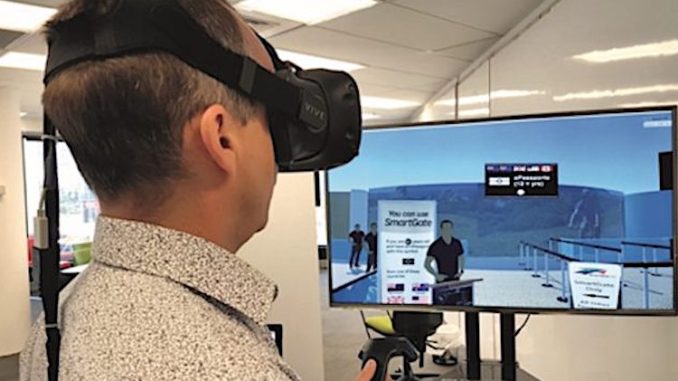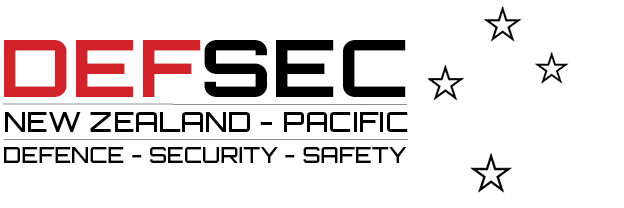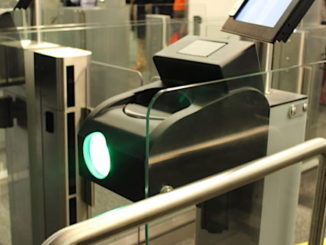
Harnessing virtual reality technology to make the traveller experience at Christchurch Airport more pleasant is one way New Zealand Customs is seeking to ensure a customer-centric approach to border security, writes editor Nicholas Dynon.
Twin challenge
Securing borders has never been more problematic as airports and border authorities grapple with the twin challenge of keeping borders open for business yet alert to non-verified travellers and closed to criminals and opportunists.
Charged with preventing the entry of non-bona fide travellers, terrorists and violent extremists, managing increased asylum seeker flows, and keeping foreign fighters from passing undetected through borders, the potential consequences of letting the wrong people through the border have never been so fraught.
This has required additional layers of scrutiny at the border and offshore during visa application assessment, including more stringent public interest criteria checking, greater cooperation with intelligence, law enforcement and defence agencies, and information sharing with foreign government partners.
So, on the one hand, the terror threat has resulted in border authorities having to implement more onerous, intrusive checks on travellers, yet at the same time more people than ever are travelling internationally – and demanding greater ease of mobility.
According to IATA, 1.45bn passengers flew internationally in 2016, and international tourism is expected to grow by 3.3 percent year on year to 2030. Asia Pacific tourism is growing at the rate of five percent annually, fueled by the rise of affluent middle classes among BRICS and particularly China and India, who are demanding increased mobility via bilateral visa liberalisation arrangements.
And that’s just tourists. The Global War on Terror and the various conflicts that have wreaked havoc in its wake, including the conflict against IS in Syria and Iraq, have led to unprecedented refugee and asylum seeker numbers.
In spite – or more correctly because – of the magnitude of these post-9/11 challenges, border security has become a hotbed of innovation. It’s ironic, but it could be argued that al Qaeda has been responsible for the most significant levels of growth and innovation in the history of international border security.
If you’ve travelled internationally from New Zealand in the last nine years with an RFID chip-enabled ePassport, then chances are you’ve used eGate. First implemented in Australia (as SmartGate), eGate deals more accurately with the task of getting more low-risk travellers through the border faster, while allowing border staff to deal with higher risk passengers.
Seamless traveller – eGate 2.0
The Australian Government tendered last year for a replacement to SmartGate – the “Seamless Traveller” project. This project is expected to abolish the need for passenger cards, exit point marshalls, SmartGate paper cards and passport control, replacing manned desks and electronic stations with automated triage points that utilise contactless technology and facial recognition cameras.
While travellers will still have to carry their passport, they will not need to break their step throughout the airport journey. They will instead be processed via recognition of their biometrics that will be matched to data stored in immigration systems.
Enjoying this article? Consider a subscription to the print edition of Line of Defence.
The new world-first “contactless” technology has been trialled at Canberra’s and Sydney’s international Airports and is due to be rolled out across the country from this year.
The Australian government’s plan is to allow 90 percent of eligible travellers to “self-process” at the border through its SmartGates by 2020.
Having already followed Australia down the SmartGate path – and with Prime Minister Jacinda Arden having recently suggested the removal of outgoing passenger cards – the question is when – and how – will New Zealand follow suit… and whether Kiwi innovators will step up to compete or cooperate with incumbent foreign suppliers.
In the meantime, airports are confronted with the disruptive need to refurbish and redesign their footprints in order to accommodate such developments and ever-increasing numbers of travellers. Auckland International Airport is going through such a process, and NZ Customs has looked to virtual reality technology to reimagine the passenger experience at Christchurch Airport.
Christchurch Airport project
Changes to layout, floor space, signage, the introduction of new staff kiosks and increased passenger numbers combined to present an opportunity for Customs to make the traveller experience in the international departure area at Christchurch Airport more pleasant and efficient.
But service design and implementation within the environment of a busy working airport can be hard to manage without disruption to staff and customers. A previous project attempting to redesign and improve the departures area layout took 18 months to complete testing.
Using Virtual Reality (VR) technology, Customs recently undertook a project in partnership with Assurity Consultancy, Corvecto, Christchurch Airport and the Aviation Security Service.
The project allowed 100 customers to trial and test new layouts within a virtual airport environment – all within an eight-week timeframe, and with ‘no-to-low’ impact on day-to-day users.
How it worked
The immersive environment created by VR simulates real-life experiences and provokes an emotional response unable to be replicated by other research methods other than field studies.
Being able to simulate an environment allows great agility and can target a diverse range of customers that field studies may not give the researcher access to. In a secure environment, such as an airport departures area, it meant that it did not interfere with business as usual.
According to a report presented by Customs to a user experience (UX) meeting held in Wellington in February 2018 as part of the annual D5 meeting, the Christchurch Airport departures VR simulation incorporated mock-ups of potential variations of the area, utilising an application built by Corvecto for use with the HTC Vive virtual reality headset.
Ordinarily associated with gaming, the HTC Vive headset uses “room scale” tracking technology, allowing the user to move in 3D space and use motion-tracked handheld controllers to interact with the environment.
The insights from a previous crowd testing study helped to form an initial baseline understanding of how people perceive the symbols, signs, and layouts of the existing departures area.
Using VR for user research allowed for an immersive experience of the departures process for participants. The user scenarios and environment were constructed to capture the spirit of the experience.
Twenty-nine participants took part in this research holding passports from 10 different countries (some participants were dual passport holders with New Zealand being one of their nationalities). Users were exposed to three environments, each featuring a different layout of the Customs departure area.
The purpose of the study was to build an understanding by immersing participants in a simulated environment and asking them to provide feedback on signage and their experience as they navigated through the three test layouts. The results contributed to the redevelopment of the departures area, improving the overall customer experience of departing Christchurch Airport as well as resolving some operational issues for Customs officers.
The combined ability to crowdsource, apply co-design methods and use VR technology also allowed valuable research to be made available to other projects, reducing the need to duplicate work effort and cutting costs.
VR technology will allow both agility and flexibility when enhancing services with a customer focus through using service design methodologies and co-designing within Customs, external businesses and customers.
VR can be used in the development of process improvement and in the design of layouts and processes that can be tested without impeding staff or customers, as there is no dependency on someone being physically present in the area concerned. The technology has the scope to be used across numerous channels and business initiatives.
By harnessing VR technology, Customs has made it easier for customers to contribute towards the modernisation of the border – a uniquely customer-centric result in an environment otherwise dictated by often demanding aviation and border security imperatives.





